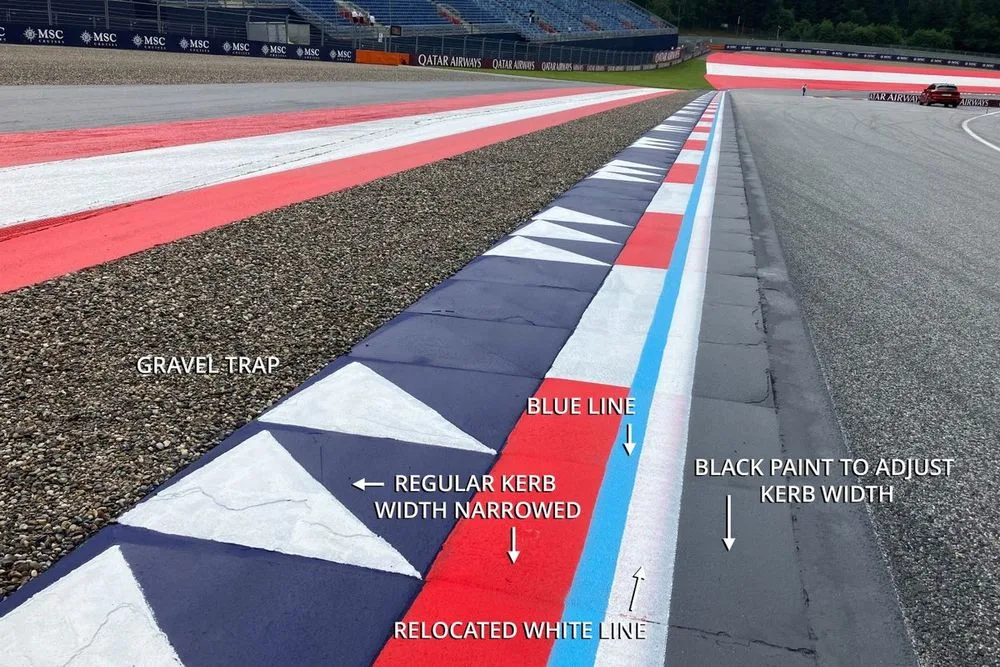A new kerb and gravel trap solution introduced at the Red Bull Ring could become the blueprint to banish track-limits problems everywhere in Formula 1.
As F1 teams got a first glimpse of the solution that has been incorporated at several corners of the Austrian Grand Prix venue on Thursday, F1 race director Niels Wittich has suggested the series has finally found a “perfect set-up”.
With the Red Bull Ring having been one of the circuits where track limits have been a major problem in the past, with there being more than 1200 offences in last year’s Austrian GP, it was clear action needed to be taken for this year.
So, following input from the FIA, a series of key revisions have been implemented in specific areas of the circuit aimed at resolving the matter for good.
And rather than it simply being a case of race organisers introducing gravel traps behind the kerbs to deter drivers from running wide, the changes are more detailed than that in an effort to sort the track-limits problem definitively.
Kerb detail
Photo by: Jon Noble
As the photograph above shows, the FIA has introduced a more holistic solution that is aimed at ensuring there is no way drivers can abuse track limits without running into the gravel.
Furthermore, the solution is one that makes it easy for the circuit to revise the kerbs for future motorbike events.
Critical to it is the FIA revising the width of the kerb through careful painting of the white lines that define the edge of the circuit and which drivers must stay inside.
To achieve this, the FIA has ensured that the kerb width in front of the gravel trap to the white line is exactly 1.5 metres wide – rather than the two metres that are standard at other F1 venues.
This is to ensure there is no way any cars will be able to go beyond the white line without actually being in the gravel trap.
An F1 car is two metres wide, while F2 (1.9m) and F3 (1.885m) are also too wide for the width of the kerb.
The narrowing of the kerb has been achieved through a relocation of the white line. This has been moved back higher up the kerb, with the area in front of it being painted black to blend in with the circuit itself.
Another key introduction to help the FIA’s policing of any drivers that do abuse track limits is the use of a blue line.
This has been introduced to provide a better visual reference for video analysis of cars running wide.
In the past, there had been times when there was no clear…
Click Here to Read the Full Original Article at Autosport.com – Formula 1 – Stories…

